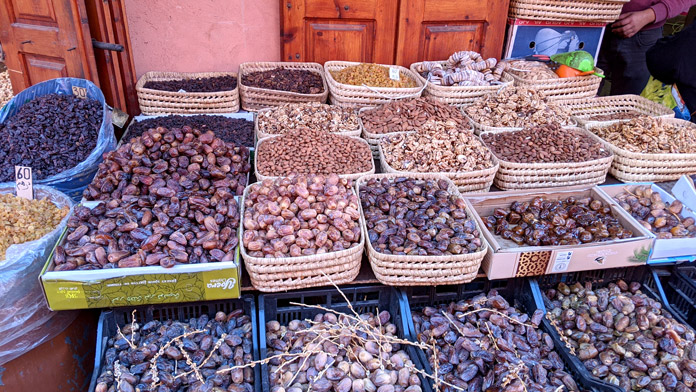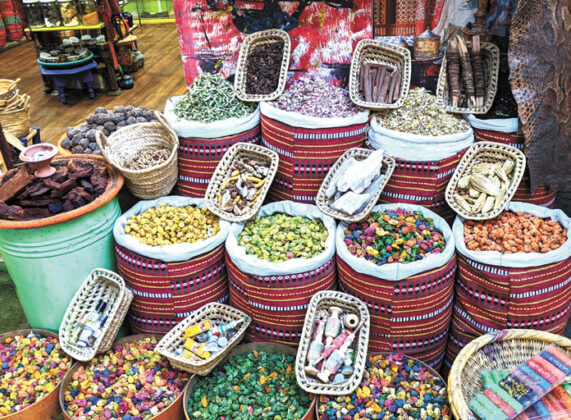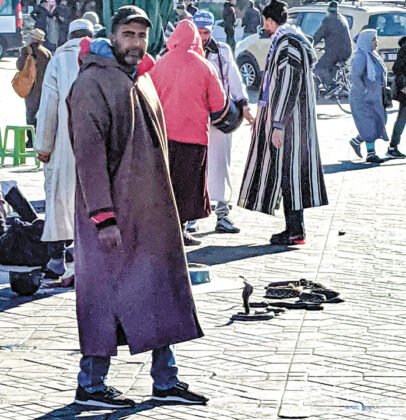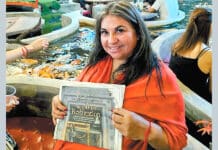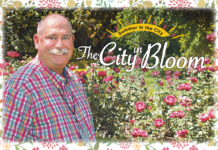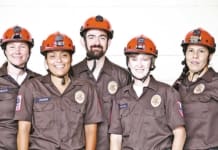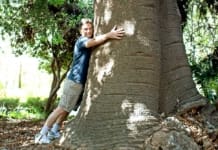 Send in your ALIVE! AROUND THE WORLD
Send in your ALIVE! AROUND THE WORLD
Take Alive! with you wherever you go! Bring your recent copy of Alive! with you when you travel and snap a high resolution photo of you holding Alive!
Send in your pictures and descriptive text using the online form, and we’ll publish it.
SUBMIT YOUR ALIVE! AROUND THE WORLD
Souks, Snakes and Magic Carpets
— A Letter From Morocco, Pt. 2

Rainbow-hued souks, soothing spas, star-filled nights, and gorgeous sunsets seen from the rooftop restaurants, could only be Marrakech in winter.
For thousands of years, the heart and soul of Marrakech has been the Old City (Medina in Arabic), and the best way to enter is through the beautiful 12th-century Bab Agnaou (gate), one of the 19 gates through the walls of the red city. There is a giant square at the entrance to the Medina called the Jemaa el-Fnaa. In the daytime it’s full of vegetable stalls, snake charmers, performing apes, women painting henna tattoos, and the proverbial gentleman from Sudan selling genuine fake sunglasses. As the sun goes down and the last call for prayer rings out across the Old City, this all changes. Like magic, the square is transformed into a giant eatery with hundreds of small food stalls popping up like mushrooms.
People share meals at long tables, and the air is filled with delicious smells from the open fireplaces. Be bold; try the grilled lamb called Mechoui, the delicious succulent and slowly simmered stew in a tagine, a traditional Moroccan pot made of unglazed clay with a round base and low sides. Or you should try snail soup (a local delicacy), but always choose a busy stall. Elsewhere in the square, fires appear, and groups of men gather around to listen to storytellers and musicians in long robes playing Gnawa, traditional music that could put you into a trance, so I am told. Others are entertained by mixed-gender belly dancers, gyrating to music produced by their portable music box. Unfortunately, there are con artists in the square at night, too, who may offer to exchange fake currency and “gifts” that you will be asked to pay for later.
Just behind Jemaa el-Fnaa square and opposite the 12th-century 77-meter-tall (250 feet) minaret of the Koutoubia Mosque, the largest in Marrakesh, are the entrances to the souks, a labyrinth of winding streets and alleyways with limited street signs. To explore this kaleidoscope of noise and color you must be willing to get lost over and over again. If somebody offers to show you the way, give a polite “no thanks,” unless you’re willing to pay for a guide. The souks radiate out like a spider’s web overflowing with shops selling everything from dates, babouche slippers, spices, Aladdin oil lamps, and leather goods.
The Zrabia souk was once called Le Criée Berbère or the Berber auction. Before the French Occupation in 1912, kidnapped slaves from Europe and Africa were auctioned here as well. But today it is full of rugs and carpets in all shapes and colors, including possibly a famous Berber rug! As you walk around this souk you will see many carpets and rugs hanging from the walls and balconies of shops; I do not recommend that you buy one of these, as they were probably imported from Pakistan. Some unscrupulous dealers even bleach, then scrub the rugs with hard brushes, then hang them out in the hot sun to dry. This not only attracts unwary tourists but gives the rugs and carpets an antique look. If you do decide to buy a rug, be prepared to haggle with the traders; this is expected and often leads to a heated exchange, so stand your ground, and bid low. To procure an authentic magic carpet to ship home, I would suggest visiting an official carpet dealer in the new city, where the prices are posted. Also, concerning the spice souk, all kinds of exotic spices are for sale, including the world’s costliest spice by weight, saffron, a labor-intensive production, as the Saffron “threads” are plucked by hand from crocus flowers by older women in the Atlas Mountains. Or so they say. You should feel safe wandering around the souks, but remember that pickpockets love crowds, so it’s best to keep valuables hidden.
Every Moroccan neighborhood has a mosque, a communal oven, and a hammam (bathhouse). I would not recommend visiting a public hammam. It is far better to visit a private one where you’ll have a room to yourself, be scrubbed with a rough bath mitt and the famous Moroccan black soap, followed by a head-to-toe massage. This is not recommended if you have sunburn.
There are 90 fountains scattered around Marrakesh. The oldest still in use today is the Mouassine Fountain, built in 1570 and fed by underground channels direct from the Atlas Mountains. Two of the most impressive buildings in Marrakech are the 17th-century Badi Palace, with its reflecting pools and sunken gardens, and the Bahia Palace, built in the 1860s featuring ornamental wooden ceilings and tiled courtyards. The Old City has many rooftop restaurants providing excellent food and incredible sunset views, but very few serve ice-cold adult beverages, unfortunately.
Outside the Old City is a very different place, with modern hotels, an American-style mall, many boutiques, private art galleries, and modern cafés and bars serving cocktails with live music. If you have time, check out the Jardin Majorelle, where French fashion designer Yves Saint Laurent acquired so much of his inspiration, and it eventually became his last resting place. We booked a nice spacious three-story walled villa called a Riad in the Old City, with four bedrooms, a kitchen, an open courtyard, and a rooftop garden. It offered so much more fun and freedom than a hotel room!
You won’t find a Genie or djinn in a magic lamp by staying home, no matter how hard you wish!
Travel while you still can.
– The Captain





